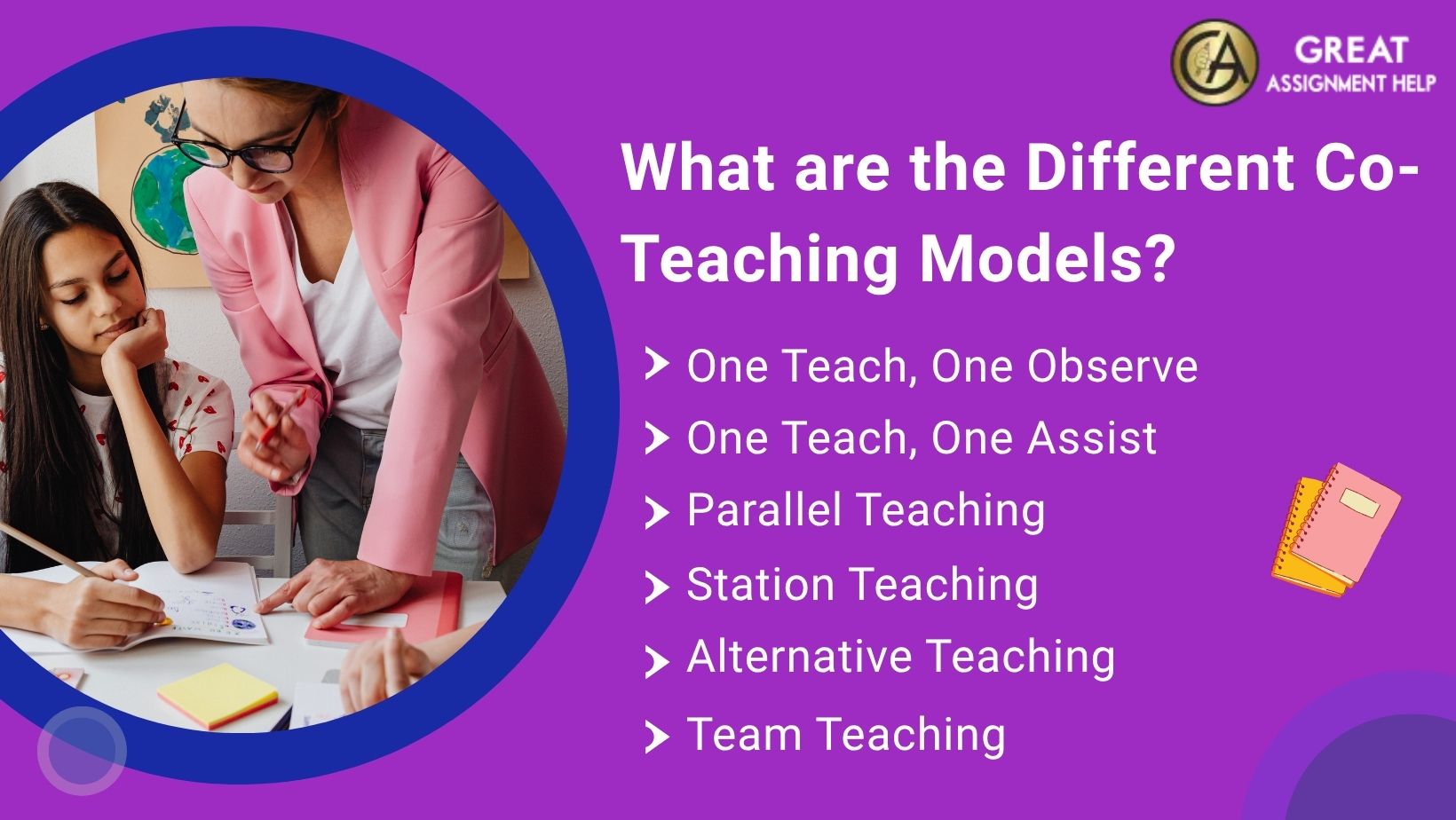Co-teaching is when two teachers work together in the same classroom. There a six different co-teaching models. By using the right models, teachers can create a better learning environment for their students.
In recent times, schools are working hard to make classrooms more inclusive for all students. One effective way to make it possible is by pairing teachers together. This strategy is referred to as co-teaching. Generally, co-teaching will allow teachers to use each other’s strengths to better support students. If you are curious to understand everything about co-teaching, then continue reading this blog. Here, we have shared detailed insights on the six co-teaching models.
What is Co-Teaching?
Co-teaching means having two teachers work together in the same classroom. They will share the responsibilities of teaching, planning lessons, observing student progress, and offering support to students when needed. Mostly, one teacher will handle general education, while the other will support students with special needs. Some co-teachers form a bilingual team, with one teacher supporting students who speak a different language from the primary language of instruction.
The co-teaching style will help teachers create a more inclusive classroom. Also, it will support teachers in using their resources more effectively.
Usually, both teachers will be licensed, but they may be trained in different areas. One may focus on a specific subject, while the other will specialize in special education. In co-teaching, both teachers will be equally responsible for making sure all students are learning and having a positive classroom experience.
What are the Different Co-Teaching Models?

Co-teaching is flexible. Hence, teachers can use different approaches in one class to fit the situation. There are several co-teaching models, each with its benefits and challenges. Generally, these models will vary in terms of the roles and responsibilities of the teachers.
The co-teaching models identified by the co-teaching experts and authors Marilyn Friend and Lynne Cook are
1. One Teach, One Observe
In the One Teach, One Observe co-teaching model, one teacher will lead the lesson while the other will watch and take notes on how students are doing. The purpose of this model is to identify which students may need extra help. Generally, this method will be useful for tracking support services like IEPs or 504 plans.
The advantage of this model is that it will allow one teacher to focus fully on teaching while the other focuses on observing. The observations of the teacher will provide helpful information to guide future lessons, group students, or plan extra support.
However, a possible challenge is that only one teacher will be actively teaching. If the teachers don’t plan carefully, then the observing teacher may remain idle in the classroom.
2. One Teach, One Assist
It is another important co-teaching model. In this model, one teacher will teach the lesson while the other will move around the classroom and help students who need extra support. This approach will work well, especially when several students need one-on-one help during a lesson.
One of the key benefits of this model is better classroom management. This model will also give students more chances to get individual support and allow new teachers to learn by observing experienced ones.
However, there are certain challenges. Students might begin to see one teacher as the main authority, while the other seems less important. If not carefully planned, the assisting teacher may not be used effectively and could end up feeling more like a helper than an equal partner.
3. Parallel Teaching
Parallel Teaching is also an effective co-teaching method. In this model, the class will be divided into two groups, and each teacher will teach one group at the same time. This method will be especially useful when the material is challenging and students require more focused support.
The benefit of this co-teaching model is that smaller groups will allow teachers to give more attention to students who are struggling. Classroom management will likely be easier with fewer students in each group. Both teachers will take an active role in teaching and share the workload equally.
However, teachers will need to carefully plan their lessons so that both groups finish at the same time. Furthermore, depending on the classroom environment, it might become noisy and harder for students to concentrate. Besides that, both teachers should feel confident in the subject they are teaching.
4. Station Teaching
In the Station Teaching model, students will move between different learning stations during the lesson. Each teacher will be responsible for teaching at one of the stations, and there may also be stations where students work independently. This method will be useful for teaching in different ways to match students’ learning styles.
One benefit of this model is that it will allow each teacher to use their strengths while both take an active role in teaching. It will also give teachers a chance to adjust the lesson to fit each group’s needs.
However, this model will take a lot of time to plan and prepare materials for each station. Moreover, students will need to learn the routine of moving between stations, and teachers must clearly explain what is expected. Also, the classroom may become noisy, which could be challenging for students with learning needs.
5. Alternative Teaching
In the Alternative Teaching model, one teacher will work with a small group of students for a specific purpose, such as extra help or assessment, while the other teacher will teach the rest of the class. This method will be helpful when some students need to review a skill or topic.
The major benefit of the alternate teaching model is that students who need extra support will receive it in a smaller group. Both teachers will stay actively involved in teaching, and the smaller group size will get more individual attention.
However, this model will require teachers to carefully plan the time and lessons together. They will also need a clear system for collecting data to make the most of the small group instruction.
6. Team Teaching
Team Teaching is a co-teaching method where both teachers take turns teaching the entire class. They will work together as co-presenters, and each one will stick to their style and expertise. This approach will be helpful when students can benefit from hearing different ways of teaching and learning the material.
The benefit of this model is that students will get a chance to experience a variety of teaching styles and ideas. It will also offer multiple lesson presentations that help students understand better.
However, this method will work best when the teachers’ styles and personalities complement each other. Additionally, both teachers will require a lot of planning and coordination to teach effectively.
Benefits of Co-Teaching for Students and Teachers
If co-teaching models are implemented effectively, they will provide more benefits to both students and teachers. Here, let us explore the advantages of co-teaching strategies
For Teachers
- Teachers will share the workload, so they won’t have to do everything alone.
- They will work together to solve problems and find solutions.
- Co-teaching will create a positive, team-based environment. This will help teachers reduce stress and make teaching more enjoyable.
- Teachers will have more chances to try creative, hands-on activities with support from their partner.
For Students
- Students will experience different teaching styles and methods from both teachers.
- If something happens during a lesson, one teacher will handle it while the other continues teaching without interruption.
- Small learning groups will give students more individual attention and support.
- Smaller groups will help students perform better because teachers can focus more on each student.
Wrapping Up
By now, you will have gained a better understanding of the different co-teaching models and their advantages and challenges. If you are a student pursuing a degree in education, then you might have to work on the various co-teaching strategies. In case you still have doubts about co-teaching, call us for help. The education experts from our team will offer you the best Assignment Help. With their guidance, you can improve your subject understanding, boost your grades, and add value to your career.



